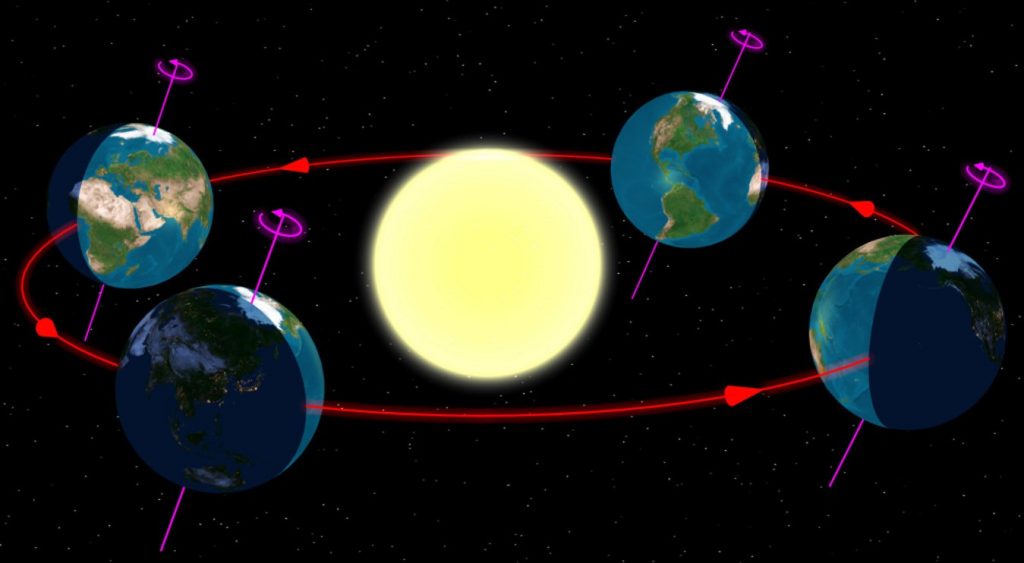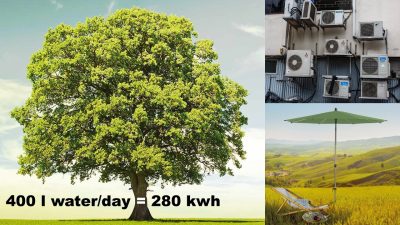Sebastian Hausmann-Z’graggen, Dr. rer. nat. Biology, Winterthur, Switzerland
For many people, CO2 emissions are the most pressing problem of our time. But when climate change is mentioned, hardly anyone talks about the trees and forests of our planet and their role in this regard.
In fact, only 0.03% of carbon dioxide (CO2) resides in the atmosphere. However, CO2 is not only in the atmosphere, but also as plant food on the ground, where it is used by plants for photosynthesis and converted into oxygen (O2). Therefore, the carbon dioxide concentration depends, among other things, on the growth and harvest cycle of the plants. Solar cycles, Earth cycles of the Earth’s orbit around the Sun and the gradual straightening of the Earth’s axis also influence temperatures on our planet. The oscillating distances of the Earth from the Sun alone, generated by the Earth’s elliptical orbit, cause almost 10% change in the solar constant and thus lead to temperature change.

In correlation with the rising heat in the Earth’s atmosphere and the growing world population, water scarcity is also an issue. 97% of the total water content is salt water and only 3% of it is fresh water. A large part of the fresh water is frozen in glaciers and ice caps (68.7%). Nevertheless, the problem is not that there is too little fresh water on Earth, but that it is no longer evenly distributed. Of the 120,000 km3 of water that evaporates worldwide each year and is distributed through the water cycle in the atmosphere and then turned back into rain, 60% evaporates above the water surface. A considerable amount of 40% evaporates over the land surface, of which 60-80% is evaporated by trees and vegetation and only 20-30% over waters.
This clearly shows that trees play an important role both in the regulation of the temperature of the Earth’s atmosphere and for the water. On average, a tree evaporates 400 litres of water per day, creating evaporative cooling. Therefore, a single mature tree performs an incredible amount of work, which is comparable to the power of 9 air conditioners operating for 24 hours. In addition, it has been observed that when there is sufficient vegetation, only 5-10% of the Sun’s heat ever warms the air and soil. In these places, the remaining 80-90% is used for transpiration (water evaporation by trees and plants). In comparison, in zones with insufficient vegetation, up to 90% of the heat is transferred to the air! At this point, Dr. Hausmann-Z’graggen also referred to the recent concept of “flying rivers”, which describes the global phenomenon of the onward transport of water over land surfaces by trees and plants.

The clearance of rainforest (42,000 km2 or 10 football fields per minute!) is a major threat to this water cycle. This is because it only rains where there is a need for rain, i.e. where there are forests and vegetation. More trees and rain provide better temperature regulation (impressive example: “Bunny Fence” in Australia). Statistics show that total water evaporation has reduced by 4-5% every year from 1950 to 2000. Due to massive deforestation, the entire water transport capacity of the flying rivers comes to a standstill and considerable amounts of water are withdrawn from the hydrological cycle, resulting in a missing cooling capacity. Up to 40% of the change in the Earth’s climate is due to deforestation.
So what can we do? Ultimately, man has it in his hands how much vegetation grows. In agriculture we should therefore try to cover and plant the soil as permanently as possible (e.g. with intercropping, undersowing or no-till tillage) and promote the formation of humus in the soil, as humus can absorb up to 90% of its own weight in water. It is time for a new water paradigm that provides for more vegetation (instead of e.g. sealed concrete or asphalt surfaces) and water reservoirs in cities (“sponge city”), so that water can be fed back into the water cycle as quickly as possible. We have the knowledge and experience of how even eroded surfaces can be transformed back into water-rich landscapes with the help of vegetation and trees, as the speaker impressively demonstrated using the example of the loess plateau in Huabei, China.
“The best time to plant a tree was twenty years ago. The next best time is now,” Dr Sebastian Hausmann-Z’graggen concluded his lecture with an Ugandan proverb.
21st October 2022, Hotel Mövenpick, Regensdorf








